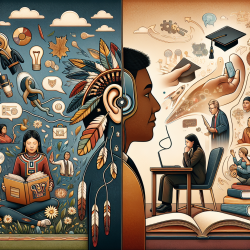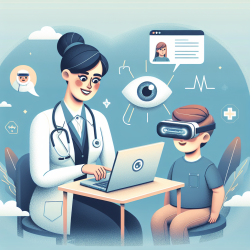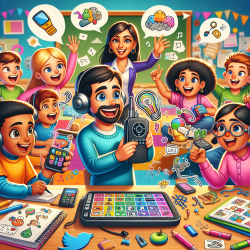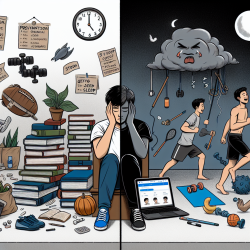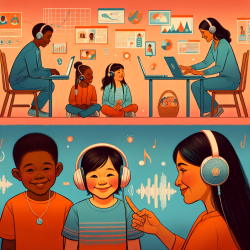In the pursuit of effective interventions for children with unilateral cerebral palsy (UCP), a recent study titled A protocol for a single-arm interventional study assessing the effects of a home-based joystick-operated ride-on-toy navigation training programme to improve affected upper extremity function and spontaneous use in children with unilateral cerebral palsy provides promising insights. This research, conducted by a team at the University of Connecticut, explores the efficacy of a home-based, joystick-operated ride-on-toy navigation training (RNT) program in improving upper extremity (UE) function and spontaneous use in children with UCP.
As a practitioner dedicated to creating optimal outcomes for children, integrating data-driven approaches into your practice is crucial. Here are key takeaways from this study that can help enhance your therapeutic interventions:
Understanding the Study
The study employed a single-arm interventional design, where 15 children aged 3 to 8 years with UCP were recruited. The intervention consisted of a 6-week control phase followed by a 6-week intervention phase. During the intervention phase, children received RNT 4-5 times per week, with sessions lasting 30-45 minutes. Researchers provided training twice a week, while caregivers facilitated the remaining sessions.
Key Findings
- Feasibility and Acceptance: The study demonstrated that the RNT program was feasible to implement and well-accepted by both children and caregivers. High adherence rates and positive feedback from families underscore the program's practicality.
- Improvements in UE Function: Significant improvements were observed in both unimanual and bimanual UE function. These were measured using standardized tests such as the Quality of Upper Extremity Skills Test (QUEST) and the Shriner’s Hospital Upper Extremity Evaluation (SHUEE).
- Child Engagement and Enjoyment: The program was designed to be intrinsically motivating, which led to high levels of child engagement and enjoyment. This aligns with contemporary motivational theories suggesting that enjoyable and meaningful activities enhance therapeutic outcomes.
Implementing the Findings in Your Practice
Based on the study’s outcomes, here are actionable steps to integrate similar strategies into your practice:
- Adopt a Family-Centric Approach: Involve caregivers in the therapeutic process. Provide them with the necessary training and resources to facilitate home-based interventions.
- Incorporate Fun and Engaging Activities: Design interventions that are enjoyable and meaningful for children. Utilize tools and activities that align with their interests to boost motivation and engagement.
- Utilize Standardized Assessments: Regularly assess UE function using validated tools such as QUEST and SHUEE to track progress and adjust interventions accordingly.
- Emphasize High-Intensity Practice: Ensure that children receive high-intensity, repetitive practice to maximize functional gains. This can be achieved through a combination of therapist-led and caregiver-led sessions.
Encouraging Further Research
While the study provides promising evidence, it also highlights the need for further research. Practitioners are encouraged to collaborate with researchers to explore innovative interventions and contribute to the growing body of evidence-based practices for children with UCP.
To read the original research paper, please follow this link: A protocol for a single-arm interventional study assessing the effects of a home-based joystick-operated ride-on-toy navigation training programme to improve affected upper extremity function and spontaneous use in children with unilateral cerebral palsy.



